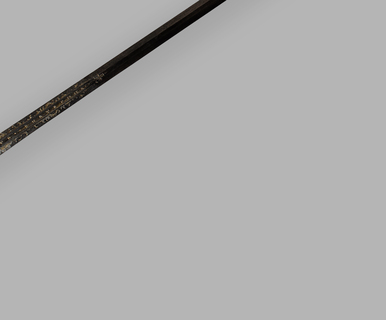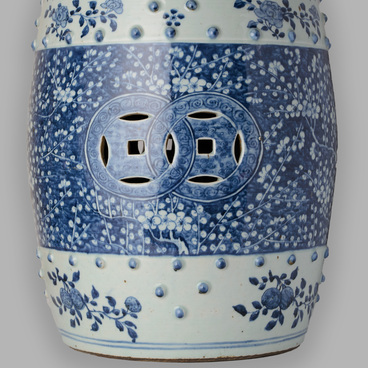Chinese garden stools are distinguished by the underglaze cobalt painting with its blue color. The stool from the museum’s collection is painted in different shades of blue — from gray blue to bright blue. On this stool, the artist depicted a mythological scene with a dragon. It was incredibly popular in China.
In Chinese painting, the dragon often symbolized the emperor. Nowadays, the Ming Dragon style of painting experiences a revival and is considered one of the most elegant types of Meissen décor.
In the museum’s collection, porcelain is represented by different schools of pottery. The exhibition features numerous Chinese artworks, most of which came to Kyakhta in the 18th century, during the period of intensive development of Russian-Chinese trade.
Old Chinese garden stools from the period of the Ming dynasty (17th century) and later ones, like this exhibit, have survived to this day. They vary in shape, décor, types of holes, and color palette. During empires such as the Yuan dynasty, ordinary people were forbidden to use the image of a dragon. Later, during the Qing dynasty, the dragon became a national symbol. However, ceramic stools depicting the creature could only be found in the gardens of palaces, nobility, and wealthy people.
It was a mark of the owner’s high social status. Porcelain manufacturing was a complicated technology that was kept secret, and anybody who disclosed it could lose their life. A vase blank was made of special kaolin clay, colored using pigments, and painted over. Then, the vase was coated with multiple layers of glaze which varied in transparency. The glaze added special brilliance to the product.
After that, the vase was heated in a special kiln with an oxygen-deprived atmosphere at a very high temperature of around 1300 degrees. The clay would become transparent and waterproof, and the gray paint would turn bright blue. It took more than a year and about eighty craftsmen to create a single vase.
One vase was painted by several artists. The value
of products was made up by the combination of the quality of porcelain, the
perfection of its shapes, and the beauty of the painting. Since the 16th century, the term “Ming vase” has become synonymous with “Chinese porcelain”
for most Europeans thanks to Portuguese merchants and seafarers who brought
porcelain to Europe.



